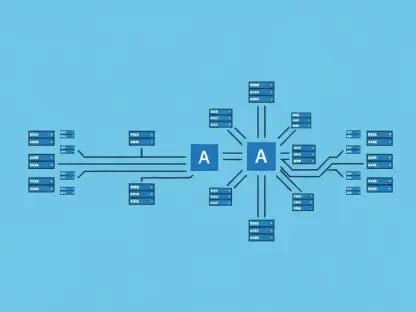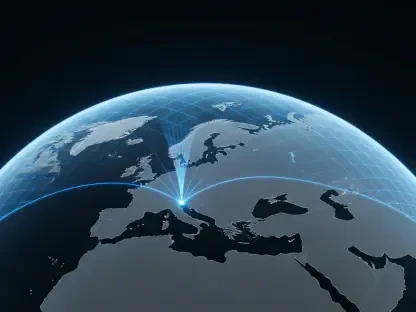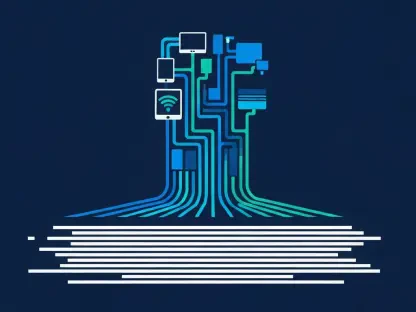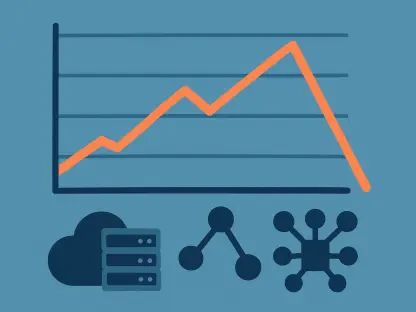In the ever-evolving landscape of cybersecurity, the allure of achieving zero Common Vulnerabilities and Exposures (CVEs) can be tempting for organizations striving to protect their software and networks. CVEs represent known weaknesses in technological systems that malicious actors could exploit. While the idea of eliminating these vulnerabilities seems ideal, the pursuit of zero CVEs may inadvertently distract from holistic security strategies that offer substantive benefits. This article delves into why zero CVEs might be considered a myth, examining the multifaceted nature of cybersecurity, the challenges inherent in this pursuit, and the strategic focuses necessary to ensure robust protection against emerging threats.
Understanding Common Vulnerabilities and Exposures
Definition and Importance of CVEs
Common Vulnerabilities and Exposures (CVEs) are publicly disclosed identifiers cataloging cybersecurity weaknesses across various software and hardware systems. They serve as a framework for sharing knowledge between security researchers, vendors, and professionals to help mitigate vulnerabilities efficiently. Each CVE is assigned a unique number and encapsulates crucial information, including details about the vulnerability, its potential exploitation threat, and recommendations for remediation. The institution that manages the CVE list, MITRE, aims to standardize the identification of vulnerabilities and facilitate cross-industry collaboration to prevent security breaches.
CVEs hold significant importance in the cybersecurity realm as they provide a methodical approach to track and combat vulnerabilities before they can be exploited. By clearly documenting known issues and their impact, CVEs allow organizations to prioritize patching efforts and assess their potential exposure to risks. The transparency offered by CVEs promotes collaboration among vendors, researchers, and governmental authorities, ensuring that timely updates and solutions can be disseminated. Additionally, security tools and software adopt CVE data to enhance scanning capabilities and strengthen overall system defenses. Despite these benefits, solely focusing on CVE counts and zero vulnerabilities may not fully capture the breadth of a secure framework.
The Limitations and Challenges
While CVEs are essential for vulnerability management, their influence is not without limitations. One of the inherent challenges is that addressing a known CVE is merely one part of securing an entire system. Security measures must extend beyond patching specific vulnerabilities to encompass a wider range of protections such as comprehensive risk assessments, threat modeling, and the deployment of proactive defenses. Moreover, the effort to eliminate CVEs entirely can detract from more effective strategies that account for unknown vulnerabilities that have not been publicly disclosed.
The dynamics of introducing new software features, updates, or patches often come with unforeseen security risks, reflecting the complexity within modern programming environments. As a result, pursuing zero CVEs is akin to chasing a moving target since new vulnerabilities may surface even after previous ones have been remedied. The complexity of diverse software ecosystems and interdependencies further amplifies the difficulty of achieving zero CVEs. Cybersecurity functions need agility and adaptability to navigate these uncertainties, capitalizing on layered defense mechanisms that offer more comprehensive protection against threats.
The Impracticality of Achieving Zero CVEs
The Balance Between Security and Innovation
Achieving zero CVEs is impractical because software innovation is inherently linked with potential vulnerabilities. As organizations develop new features and enhancements, they introduce elements that may inadvertently weaken existing security structures, an aspect that persists even when rigorous testing and QA processes are in place. Cybersecurity must strike a delicate balance between enabling technological innovation and maintaining robust defenses. This delicate act often involves prioritization, where security teams assess potential threats against the strategic value of innovation.
Zero CVEs as a goal assumes that it is possible to proactively address all vulnerabilities before they manifest—a scenario that is unlikely given the evolving threat landscape and emerging technologies that constantly change attack vectors. Engineers must concurrently develop features and patch vulnerabilities, leading to trade-offs between organizational goals and security priorities. Attempts to eliminate every CVE could stifle innovation and limit the introduction of beneficial technology, as developers face constraints that may hinder creativity and progress. Understanding these trade-offs is critical in aligning security with business objectives in a manner that minimizes risk and maximizes technological advancement.
Economic Factors and Incentives
The pursuit of zero CVEs is further complicated by economic forces and incentives shaping the cybersecurity sector. Security researchers, companies, and academic bodies are financially incentivized to discover and report new vulnerabilities, contributing to a dynamic flow of CVEs. Bug bounty programs reward individuals who successfully uncover flaws in software, driving the ongoing identification of CVEs and underscoring the impossibility of having zero vulnerabilities. Moreover, software vendors often market vulnerability scanning products that promise to expose unknown CVEs, a tactic that encourages heightened focus on vulnerability identification as a measure of product value.
Beyond financial incentives, competitive pressures in the cyber industry foster a climate where rapid patch deployment becomes a mark of diligence and capability. Yet, this race to reduce CVE counts may overlook more strategic approaches focusing on comprehensive security architecture and proactive defenses. Ignoring the economic realities driving CVE identification, the quest for zero CVEs may inadvertently channel resources into unproductive areas, overshadowing more effective long-term security strategies. While the economics of CVE identification favor discovery, organizations cannot discount the nuanced approach required to manage risks effectively.
Rising CVE Numbers: Trends and Implications
Motivators Behind Increasing CVE Counts
In recent years, the number of CVEs has surged due to several underlying factors that propel vulnerability disclosure and reporting. The accelerated pace of technological development, coupled with the proliferation of Internet of Things (IoT) devices, creates a complex web of interconnected systems rife with potential vulnerabilities. With each new software, hardware, or cloud-based solution, new attack surfaces emerge, necessitating vigilant efforts to identify CVEs. The rise of artificial intelligence and machine learning-based code generation compounds these threats by injecting automated processes that often outstrip manual oversight.
This elevation in CVE numbers also stems from a growing security-conscious community. As more programmers and researchers dive into security domains, the impetus towards uncovering vulnerabilities intensifies, reflecting the increased sophistication of cyber threats. Security measures must match this progress, accounting for the rapidly evolving tactics employed by malicious actors. The shift in focus to discovering vulnerabilities is further accentuated by educational institutions and online training platforms that encourage cybersecurity research, organically expanding the pool of active researchers committed to unveiling CVEs.
Implications for Cybersecurity Strategies
The surging count of CVEs redefines the landscape of cybersecurity management and necessitates a strategic reconsideration of defense mechanisms. Organizations must shift from the outdated notion that a high count of vulnerabilities denotes a weak security posture, recognizing that ongoing CVE identification is part of a proactive strategy indispensable for staying ahead of adversaries. Security professionals are tasked with discerning which CVEs represent genuine risks versus those that may be less significant due to robust compensating controls. Mitigation requires filtering out extraneous information to focus on threats with consequential impact.
A strategic review should involve transitioning from solely focusing on CVEs to adopting a comprehensive security framework, including domain-specific threat intelligence, penetration testing, and active incident response protocols. Organizations can bolster their cybersecurity posture through a defense-in-depth strategy, integrating diverse methods like secure configurations, robust access control mechanisms, and dynamic threat monitoring. The emphasis on active protection constructs a layered security approach that addresses vulnerabilities progressively. Ultimately, sizing up CVE implications involves expanding beyond rudimentary patch management to capitalize on advanced threat detection and response capabilities.
Engineering Trade-offs and System Stability
Innovation Against Vulnerabilities
The pursuit of zero CVEs entails navigating a myriad of engineering trade-offs that organizations grapple with as they balance innovation against vulnerabilities. As software evolves, updates, patches, and feature introductions invariably create shifts within a system’s architecture, potentially introducing new vulnerabilities even as others are resolved. Patching known CVEs affects system stability, with unintended consequences potentially imposing compatibility issues or degrading performance. This balancing act between maintaining system integrity and integrating innovative functionality is fundamental to cybersecurity practice.
Security engineers must work diligently to manage the interplay between system enhancements and vulnerability remediation. Constructing software ecosystems with resilience involves identifying the merits and drawbacks of security interventions, and prioritizing those that address critical vulnerabilities while fostering innovation. Preventive strategies go beyond mere patches, incorporating aspects like secure coding practices, rigorous development standards, and continuous monitoring to swiftly detect anomalies. Engineering trade-offs imply that resolving vulnerabilities must align with a cohesive security strategy accommodating the intrinsic dynamism of technological systems.
Cognitive Bias in Security Decision-Making
Exploration into pursuing zero CVEs uncovers cognitive biases influencing decision-making processes, where technical stakeholders skew focus towards avoiding easily quantifiable vulnerabilities rather than broader systemic risks. The allure of reducing CVE counts often leads to overconfidence in perceived security posture, inadvertently leaving it flimsy against unforeseen attack vectors or vulnerabilities that may contribute to critical breaches. Psychological biases foster a tunnel vision effect, where risk consideration becomes narrowly confined, overlooking nuanced variables shaping cybersecurity dynamics.
Security professionals must remain acutely aware of such biases, continually striving for objectivity and comprehensive evaluation of the risk landscape. Structured frameworks like risk matrices offer pragmatic modalities to assess security decisions within multifaceted environmental contexts. Embracing diverse analytical approaches ensures that organizations maintain vigilance against biases that may cloud judgment in vulnerability management. Sustainable security management necessitates broadening awareness beyond rudimentary CVE chasing, embracing strategies that foster a nuanced understanding of proactive threat mitigation.
CVE Economics and Incentive Structures
Financial Dynamics in Vulnerability Discovery
Exploring the nexus of economics and CVE identification unveils an industry driven by potent financial dynamics fueling the disclosure of vulnerabilities. The cyber industry operates under the influence of myriad stakeholders—including security researchers, vendors, and institutions—eager to capitalize on opportunities arising from vulnerability discovery. Bug bounty programs exemplify financial incentives where individuals are rewarded for uncovering CVEs, perpetuating a dynamic milieu that continually generates new vulnerabilities.
The role of economic motivation intertwines with discovery, foregrounding the competitive landscape where organizations may release patches rapidly to safeguard reputational integrity. Security product vendors, highlighting costly CVE detection capabilities, often underscore their perceived diligence. The cyclical interplay of CVE economics necessitates security practitioners to discern genuine risk implications versus financial biases shaping vulnerability perceptions. Although incentivized vulnerability discovery stimulates innovation, security management must gauge risk through context-specific, methodological approaches.
Impact of Competitive Pressures
Competitive pressures within the cybersecurity sector drive the incessant pursuit of vulnerability discoveries, urging vendors toward rapid detection and patching. While appearing beneficial, hurried vulnerability remediation efforts often overlook the systematic risk evaluation necessary for enduring security management. The focus on CVEs can impede holistic strategizing that should include architectural security measures. An atmosphere rife with competition may inadvertently diminish coordination, fostering siloed approaches that are unable to effectively counteract coordinated cyber threats.
Strategic foresight involves aligning competitive impulses with thorough risk assessments and decision-making frameworks that accommodate comprehensive security architecture. Vendor collaborations, information sharing, and industry alliances can amplify responsiveness against emergent threats, transcending mere CVE reduction. Security organizations benefit from acknowledging competitive limitations within vulnerability economics, pursuing methodologies that cultivate resilient systems grounded in multi-layered defensive capacities. Recognizing competitive pressures encourages informed resource allocation, adopting nuanced techniques beyond simplistic CVE targeting.
The Role of AI in Vulnerability Identification
AI Transforming CVE Discovery
Amid the myriad influences driving CVE numbers lies artificial intelligence (AI), transforming vulnerability discovery through ingenuity, automation, and enhanced analytical capabilities. AI instigates a paradigm shift from manual identification toward algorithm-based discovery that efficiently scans and interprets massive code bases. Machine learning mechanisms expedite uncovering vulnerabilities by leveraging anomaly detection, predictive analytics, and pattern recognition within empowered algorithmic frameworks.
The burgeoning influence of AI marks an inflection point where security practitioners optimize vulnerability discovery processes by augmenting software development procedures with automated capabilities. Robotics integrate machine learning into application environments enhanced by instantaneous detection precision, reconciling emergent threats against established security frameworks. As AI fosters CVE identification, security professionals leverage insights gleaned from sophisticated scans, fortifying systems against dynamic risk exposures with heightened resilience.
Practical Challenges and Strategies
AI’s expanding role in vulnerability discovery confronts cybersecurity practitioners with the technical challenges of bridging algorithmic insights with practical security interventions. While AI multiplies detection capacity, integrating actionable strategies necessitates astute calibration to synchronize algorithmic outputs alongside human intervention. Depending solely on automated discovery may inadvertently compromise comprehensive security understanding, overlooking complex implications entangled within multifactorial environments.
Security professionals navigating AI enhancements require competency in interfacing algorithms with traditional security techniques, fostering scalable methods attuned to sophisticated risk variables. AI-generated insights necessitate contextual interpretation mapped against accurate threat landscapes to mitigate erroneous recommendations that could undermine robust defenses. Organizations prioritizing practical responsiveness complement AI outputs by channeling resources into systemic fortification, structuring resilient cybersecurity ecosystems impervious to adversarial perturbations.
Misguided Pursuit of Zero CVEs
Misconceptions and Potential Negligence
The pursuit of zero CVEs is misguided due to misconceptions that ascribe an unrealistic sense of security assurance through the absence of vulnerabilities. Organizations predisposed to seeking zero CVEs potentially undermine their security posture by equating vulnerability reduction with comprehensive protection, ignoring systemic risks maintained by undetected threats. Persistent emphasis on CVE enumeration breeds complacency, inadvertently neglecting precautionary mechanisms crucial for mitigating unknown vulnerabilities.
Security apparatus fostering CVE-centric approaches risks obfuscating broader strategic measures foundational to enduring threat management. Holistic security principles strengthen proactive defense techniques by encompassing multifaceted protective stances and accommodating continually evolving adversarial tactics. Organizations investing in comprehensive cybersecurity understand that zero CVEs offer superficial security layers devoid of forceful countermeasures, necessitating systematic fortification against unidentified threat vectors.
Broader Frameworks for Holistic Protection
Cybersecurity structures striving for genuine defensive capabilities extend beyond CVE-based strategies toward adopting comprehensive risk management frameworks that embody diverse protective dimensions. Long-term viability necessitates synthesis where security components integrate diverse threat intelligence, architectural security measures, and adaptive risk methodologies entrenching comprehensive protective stances. Practitioners channel resources into expansive security practices fostering fluid adaptation against emergent threat scenarios.
Layered defenses extend beyond rudimentary patch management, encompassing continuous monitoring, threat modeling, active-response protocols, and collaborative cyber intelligence exchanges. Security oriented around holistic structures mitigates vulnerabilities progressively, establishing firm benchmarks against adversarial maneuvers. Organizations realizing fortified ecosystems eschew CVE limitations by operationalizing strategic interventions, actively counteracting fluid risk landscapes.
Emphasizing Defense-in-Depth Strategies
Multi-layered Security Approaches
Recognizing the inadequacies inherent in pursuing zero CVEs, the emphasis must shift towards multi-layered security approaches that encapsulate defense-in-depth strategies, where diverse protective nuances cultivate robust environments. Defense-in-depth integrates successive security components to fortify the perimeter against adversarial threats while acknowledging vulnerabilities within holistic protective frameworks. Strategic prioritization mobilizes diversified defenses, aligning architectural design with proactive threat mitigation, and transcending the rudimentary focus on vulnerabilities.
Security practitioners advocating for defense-in-depth methodologies orchestrate multifaceted protections, encompassing preventative design measures, comprehensive threat intelligence cultivation, active monitoring procedures, and instantaneous incident responses. Each protective aspect interfaces within overarching security structures, collectively countering direct attack vectors while compelling adversaries to confront complex protective landscapes. Multi-layered protections instill dynamic resilience as organizations actively deter exploit attempts, balanced with architectural ingenuity.
Implementing Effective Security Frameworks
Identifying effective security frameworks that embrace defense-in-depth requires methodical alignment to bridge disparate protective components into cohesive systems, robustly guarding against contemporary threats. Framework alignment optimizes protective measures by channeling resources into diverse mechanisms, safeguarding against multifaceted vulnerabilities originating within dynamic cyber landscapes. Strategic alignment involves calibrating individual protective aspects into congruent security structures that accommodate broader risk ecosystems.
Security professionals orchestrate effective frameworks by merging architectural design considerations, coordinated threat intelligence dissemination, continuous risk evaluation techniques, and collaborative information exchanges. Organizations adopting defense-focused security frameworks derive robustness from expansive security measures synchronized within cohesive systems adapting progressively against emerging threat vectors. Emphasizing defense-in-depth solidifies resilient architectures, ensuring sustainable protection against complex risks.
Conclusion: Moving Beyond Zero CVEs
In the dynamic world of cybersecurity, the notion of achieving zero Common Vulnerabilities and Exposures (CVEs) can be appealing for organizations determined to secure their software and networks. CVEs are identified flaws in technological systems that hackers might exploit. Although the concept of eradicating these vulnerabilities appears ideal, the pursuit of zero CVEs can inadvertently divert attention from comprehensive security strategies that offer meaningful protection. This is because the effort to maintain a CVE-free environment often overlooks the complexity of cybersecurity, which involves understanding and addressing the ever-changing nature of threats.
Focusing exclusively on eliminating CVEs might give organizations a false sense of security while neglecting other vital areas such as real-time threat detection, incident response, and employee training. Cybersecurity is a multifaceted field that requires a balanced approach, prioritizing continuous updates, adaptive defenses, and proactive monitoring. The myth of zero CVEs underscores the need for strategic planning that acknowledges the limitations of a singular focus on vulnerabilities. By broadening their security efforts, organizations can better anticipate and counteract emerging threats, ensuring a more resilient defense posture.









